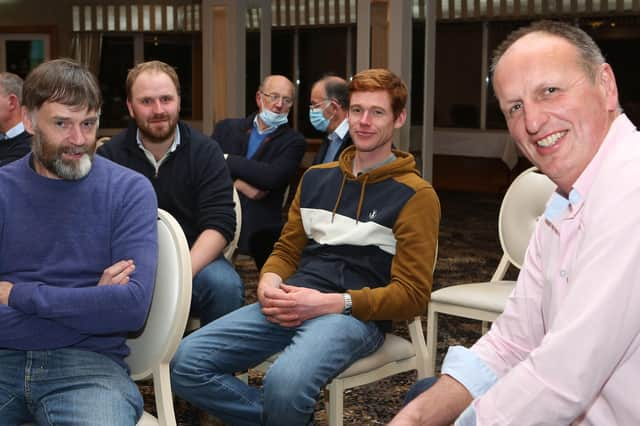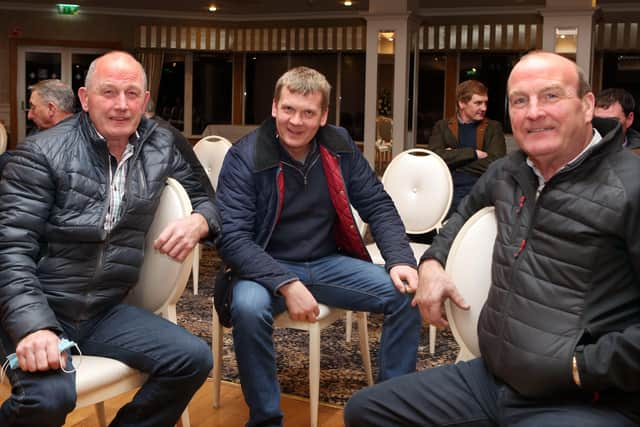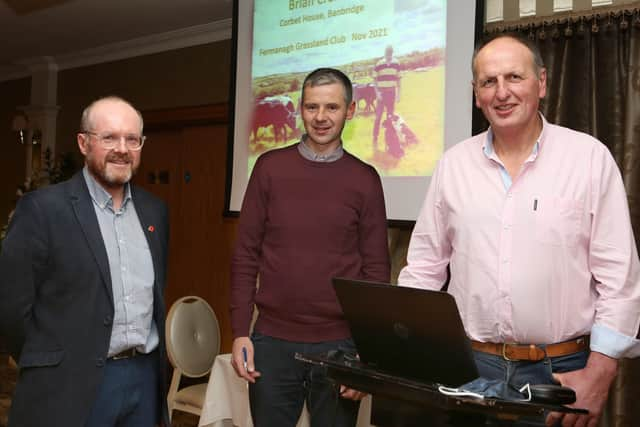Maximising grass in calf to beef system


Brian runs a calf to beef system and has also been appointed as a CAFRE Technology Demonstration Farm.
The farm at Corbet House, Banbridge extends to 105 hectares which includes 24 hectares of conacre in four land blocks, close to the main home farm. He runs 500 ewes and the calf to beef system is based on the purchase each year of 160 beef calves from the dairy herd comprising mostly Aberdeen Angus but also Hereford, Belgian Blue and Limousin crosses with a reduced input system based on maximising grass.
Advertisement
Advertisement
Brian ensures that his reared calves reach 100kgs weight at weaning. He uses 8-10 teat milk feeders which are segregated to ensure each calf gets their allocated amount of milk.


Up to 10 calves are grouped in each pen. After weaning, calves are moved to a straw-bedded silo pit before turnout in March. The calves are offered straw for roughage and gradually moved onto silage feeding.
They are fed 2kgs of rations at turnout to grass which is further reduced before stopping meal feeding.
There is a lot of emphasis on grass production on the farm, using soil analysis to check pH levels (the average pH is 6.14 with P index 3 and K index 3), a grass plate meter is used and dung samples are taken as well as use of the CAFRE Nutrient Calculator.
Advertisement
Advertisement
A fertiliser plan is developed and a Mastek pan buster is used to alleviate compaction. The 80 paddocks are around 0.6ha in size with average stocking rate of 2.65. There is clean grazing by mixing cattle with sheep grazing. There is more grass available through the season when a silage first cut is taken early, usually around 22-24 May.


The first of the cattle are turned out in late March. Daily liveweight gains range from 1kg per day in reared calves, 1.2kgs/day in weaned calves, 1kg/day in stores and 1.2kg/day in finishing cattle.
To facilitate grass utilisation, paddocks can be mowed pre and post grazing. Brian explained that he is trying to produce animals weighing 750-800kgs liveweight with a 52% kill-out at 24-26 months old for steers and 20-22 months for heifers, targeting a 400kgs carcase.
To keep his grassland performing well, Brian reseeds around 10 per cent of the farm each year, using various cultivation methods such as ploughing, min-till and direct
Advertisement
Advertisement
His goal in rearing the dairy bred calves to beef is to increase production efficiency and output. In 2018, his stocking rate was 2.26 lu/ha with a gross margin of £1213 and in 2020, the stocking rate increased to 2.65 lu/ha with a gross margin of £1,663.
He presented the pros and cons of calf to beef to his Grassland Club audience.
He message farmers was to “measure and manage.”